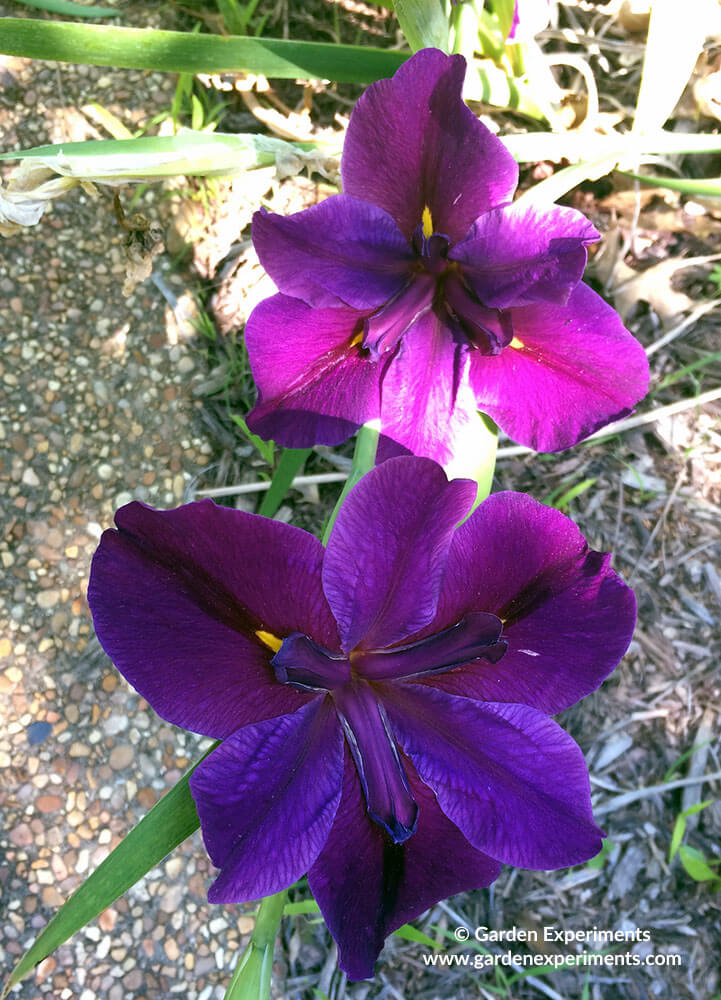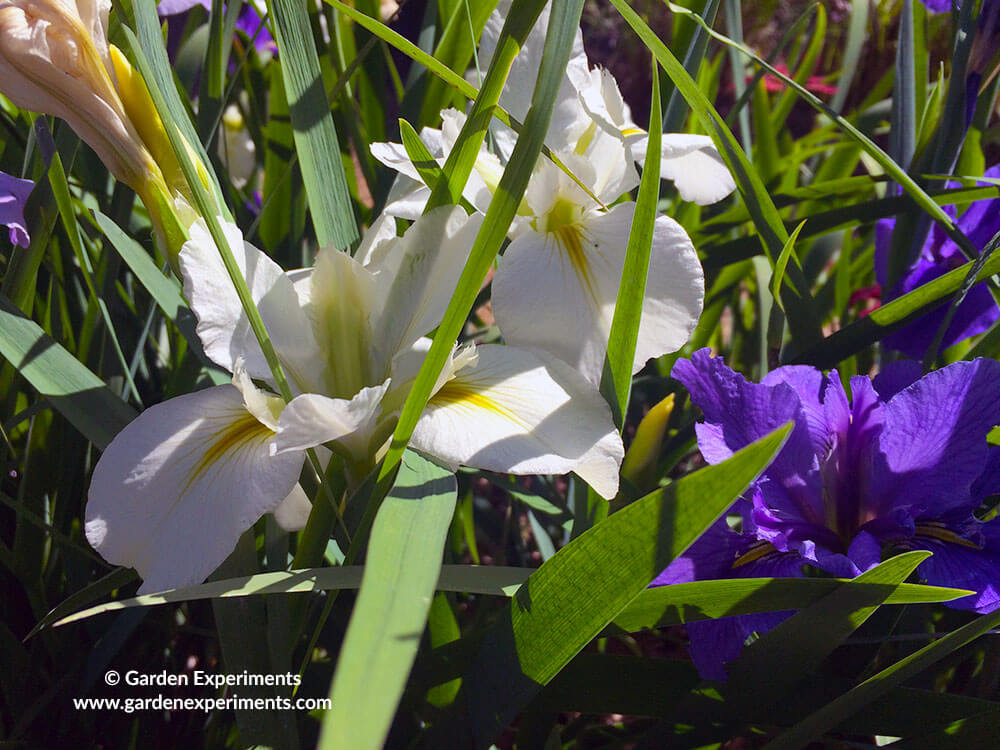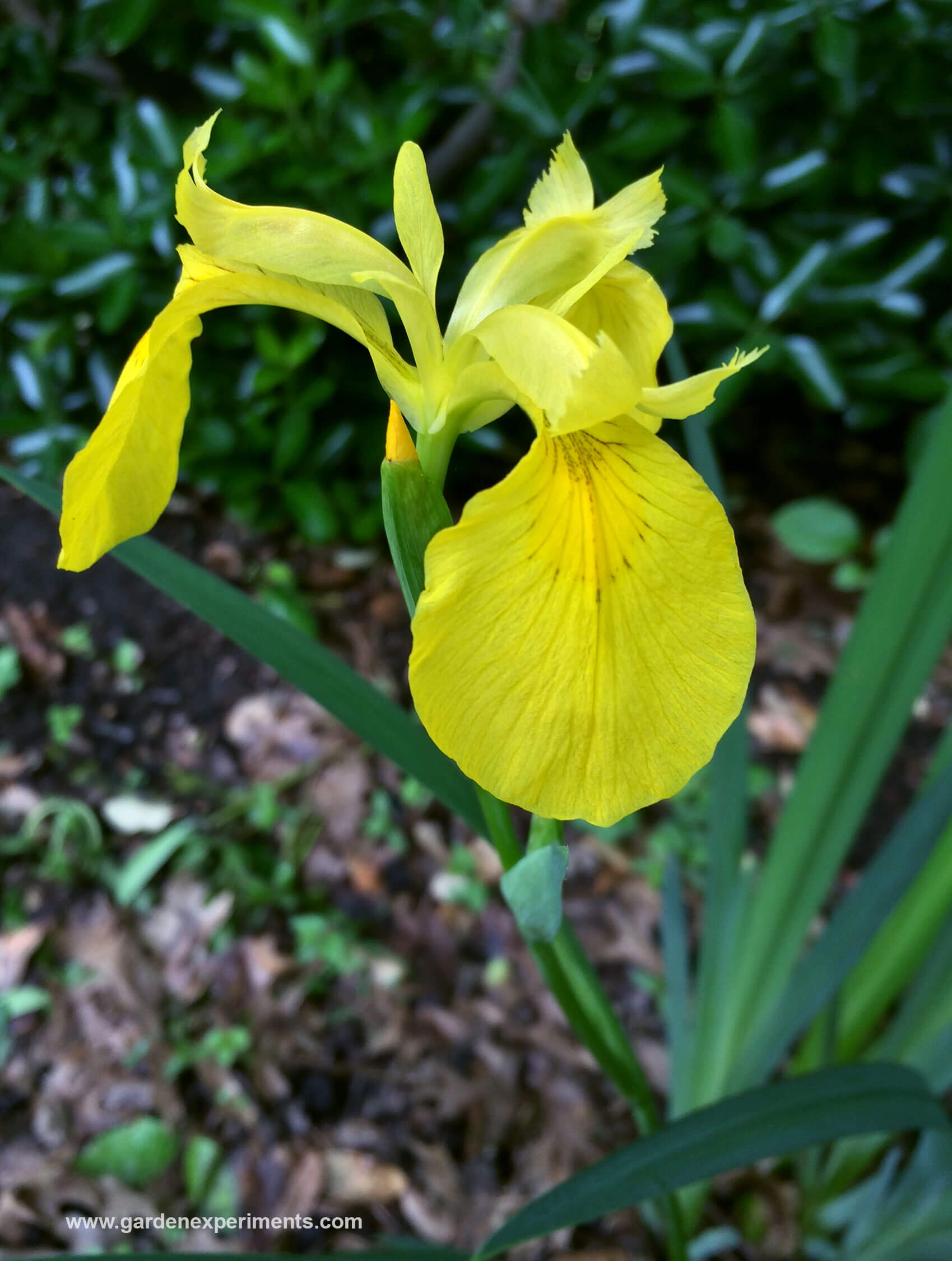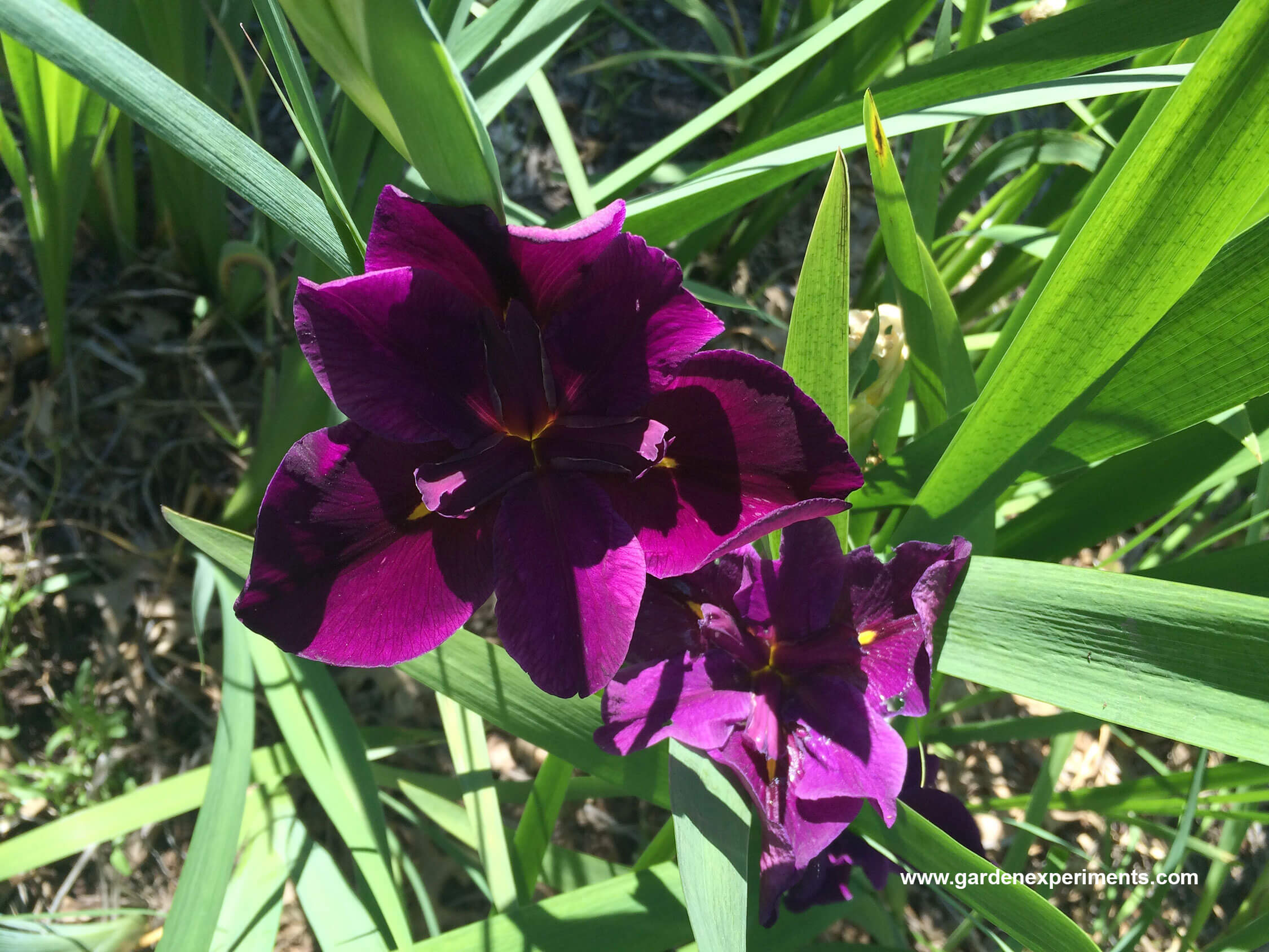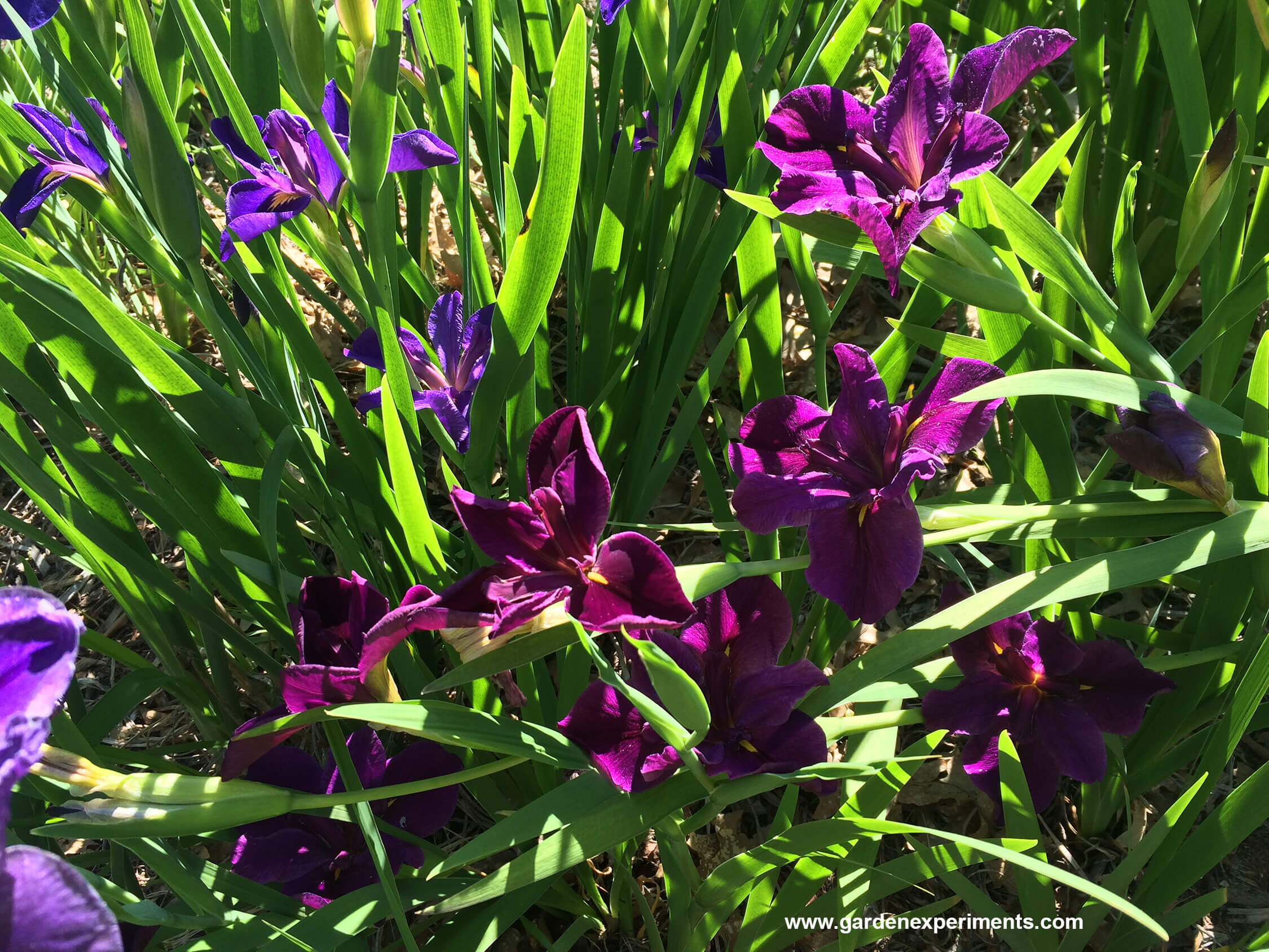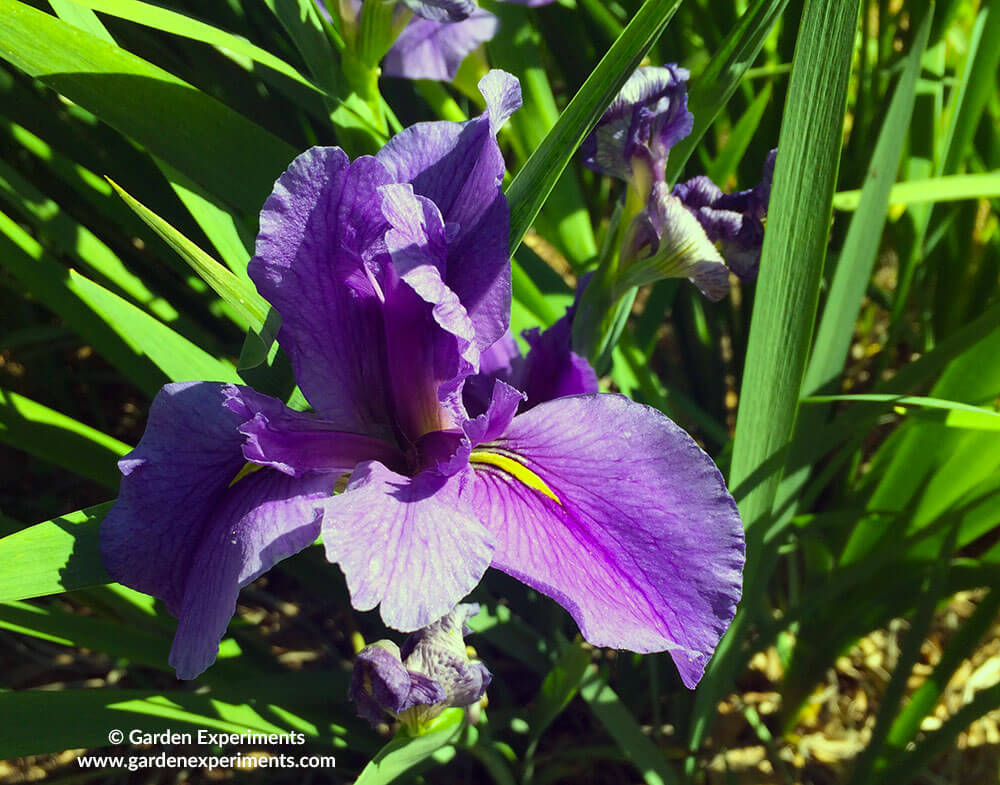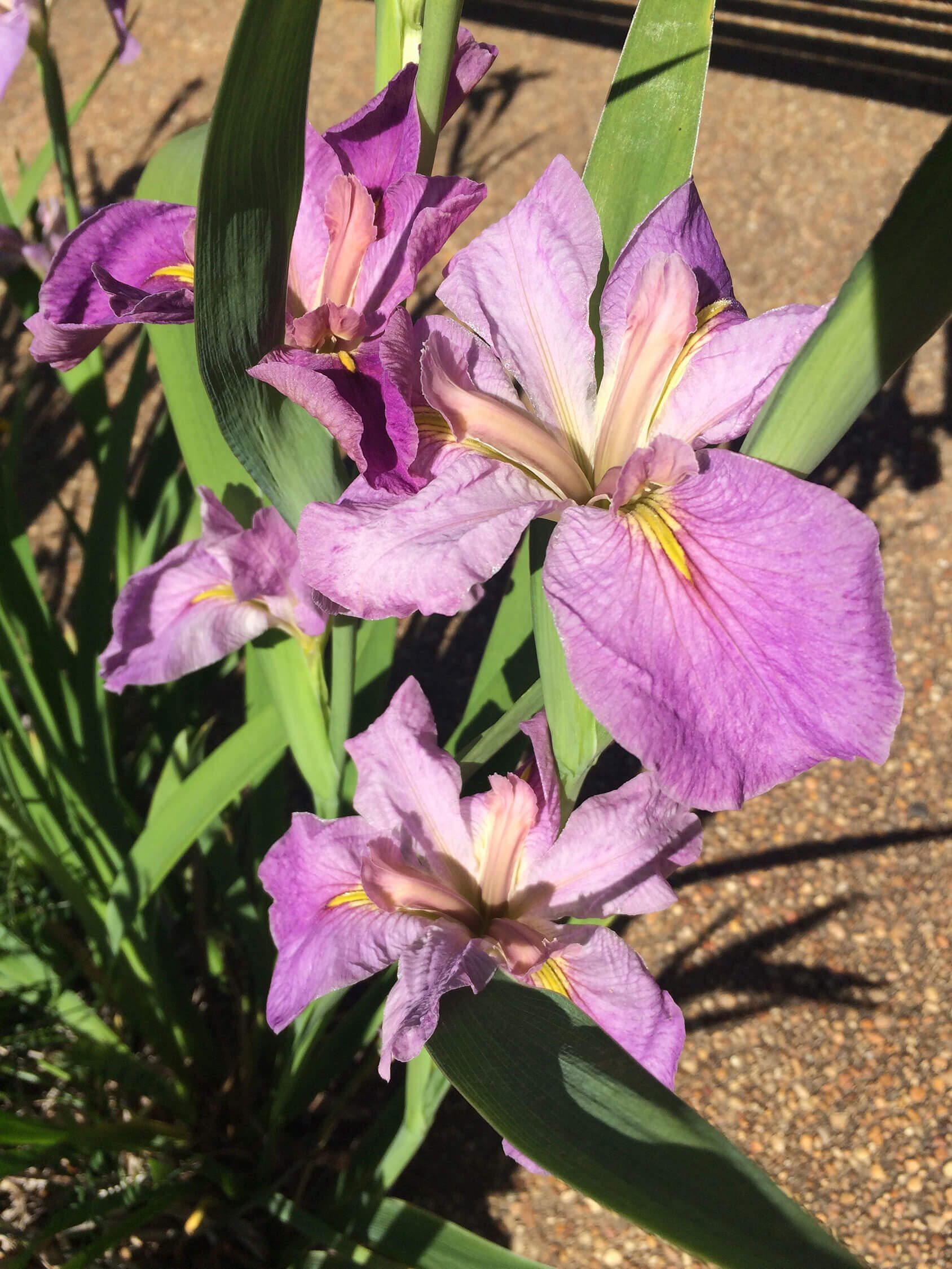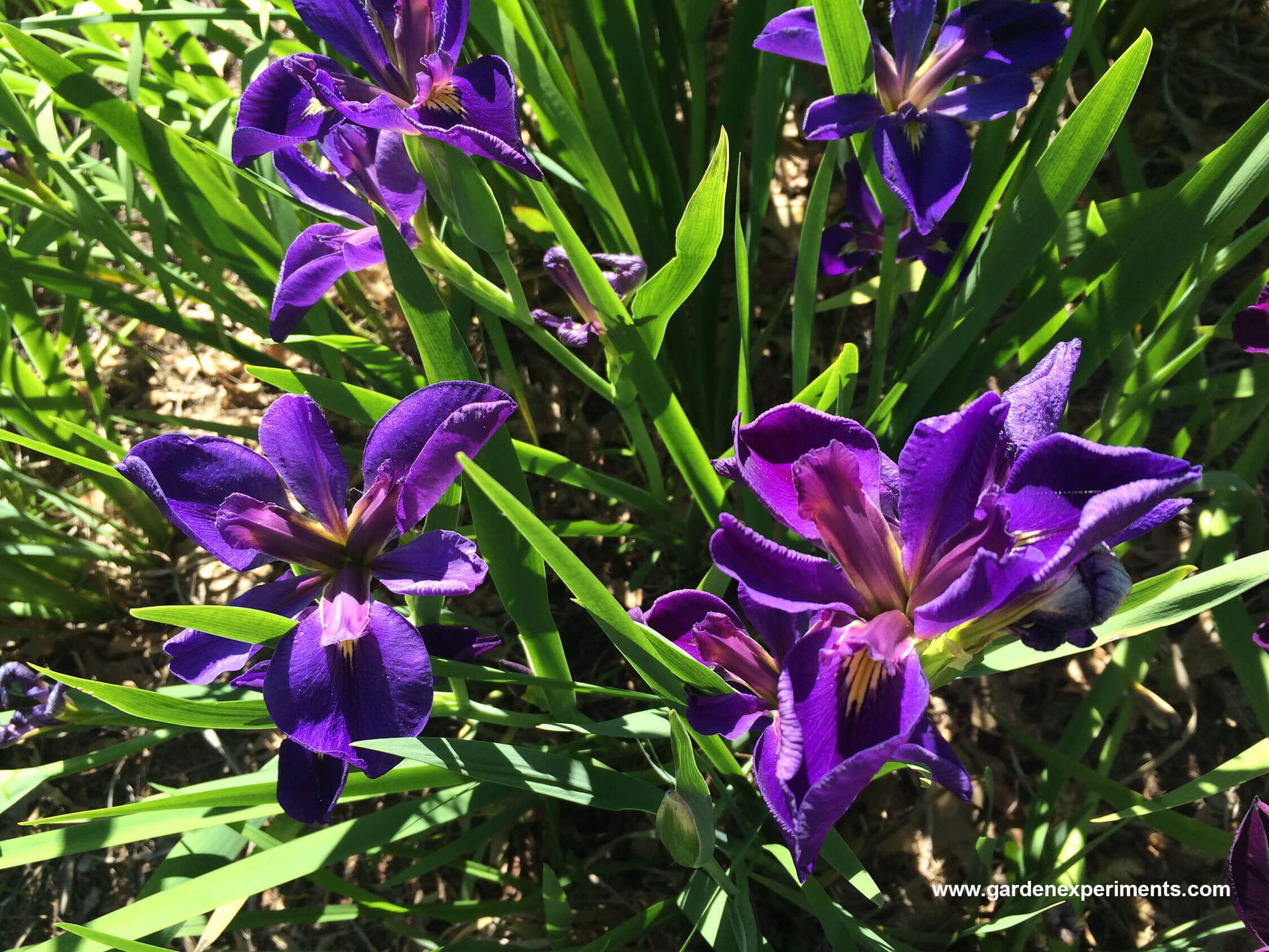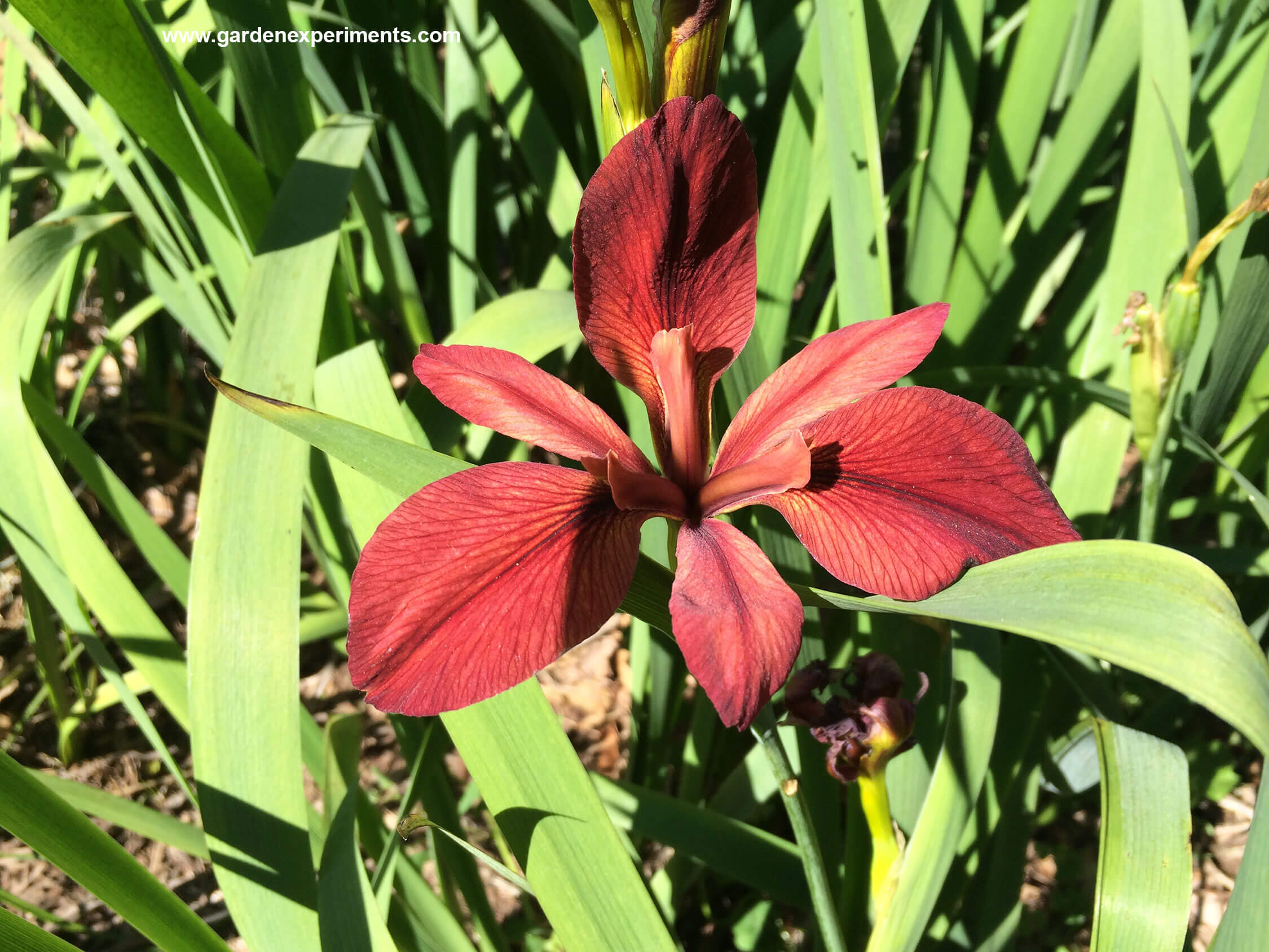If you want an iris that has a lot of color but is very low maintenance, maybe the Louisiana iris if for you. The wide variety of colors and shapes in these irises make them very popular.
This is a favorite of mine and I find the unique flowers gorgeous. The leaves are attractive, providing texture in the garden long after the blooms are gone. With such easy care, what’s not to love?
There are five species of Louisiana irises. These are native to the southeastern U.S. Many hybrids have been developed from these species. The five species are: Iris hexagona, Iris fulva, Iris brevicaulis, Iris giganticaerulea, and Iris nelsonii.
Bloom Time
These irises flower from March through April, providing rich color to your garden. The flowers range in color from white to rust to purple and yellow.
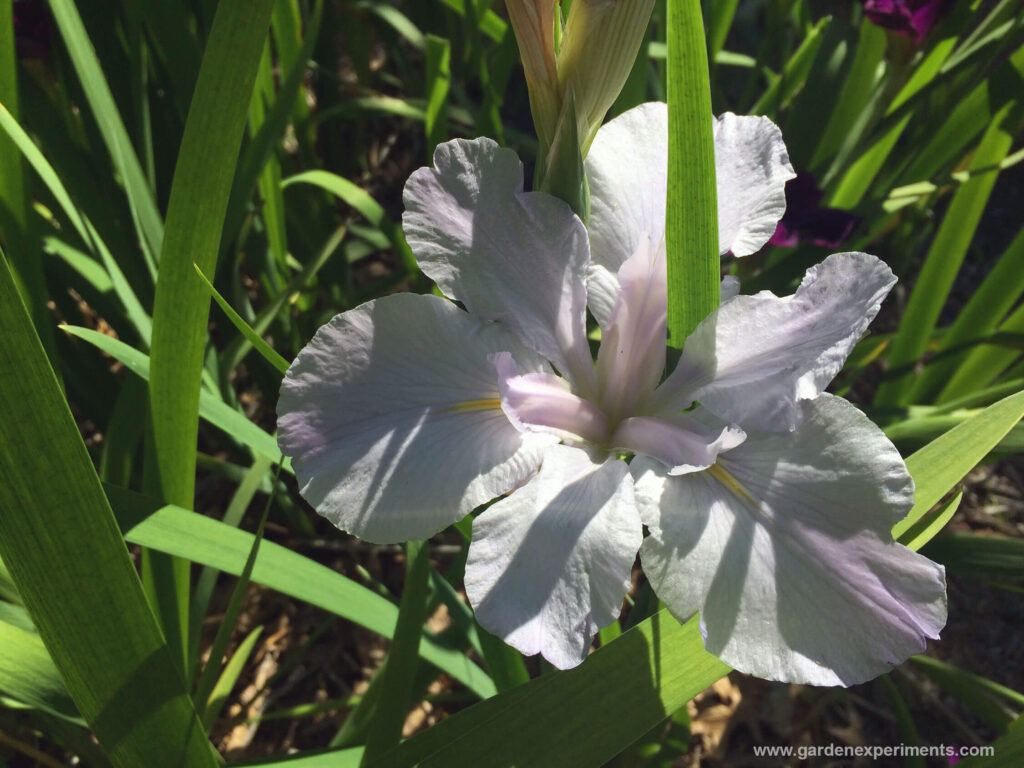
Planting and Care of Louisiana Irises
Louisiana irises are swamp-loving plants and can be found in wet areas. You can even grow these irises in your ponds in a pot. In times of drought, you may need to keep this plant watered for it to perform well.
They prefer full sun (6 to 8 hours) but can tolerate some shade. The leaves are narrower than typical cultivated iris leaves, making them look a little more grass-like.
Louisiana irises can tolerate a wide range of soil acidity levels and types of soils. Since their native range includes a lot of clay soil, they are a good choice for those with this type of soil.
Plant them with only a little soil on top. Mulch around the base for winter protection and to help keep the soil moist.
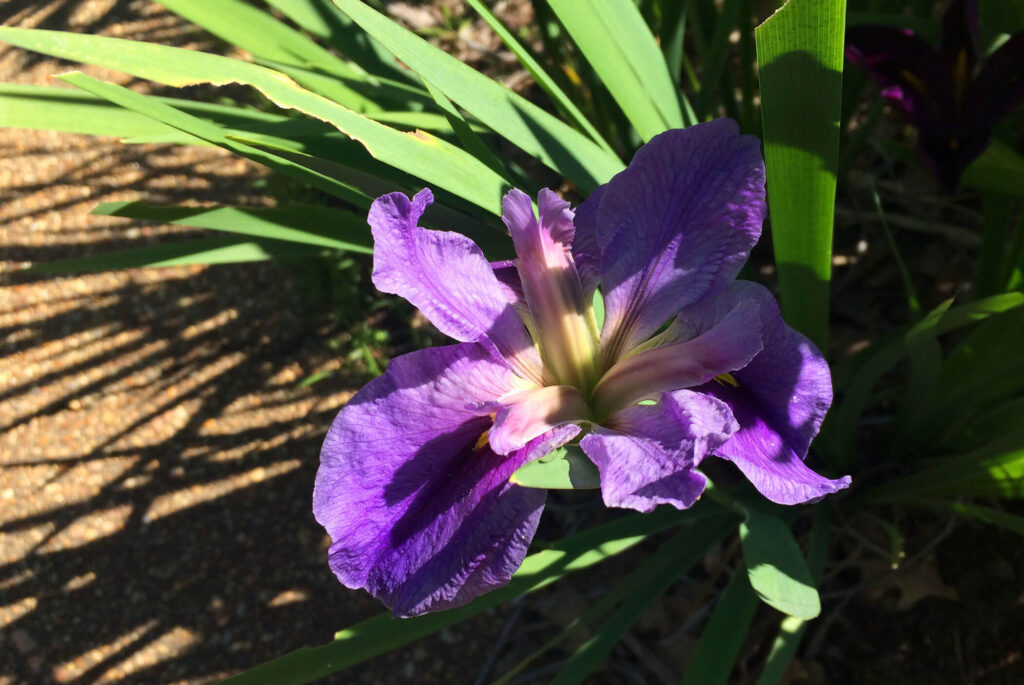
Propagation
The easiest way to propagate this plant is to divide tubers in late summer (August and September). After the new plants are transplanted and the original plants and replanted, be sure to keep the beds well watered for a few days.
Widlife Value
Hummingbirds, butterflies, and other pollinators are attracted to the flowers.
Additional Resources
- Learn more about Iris giganticaerulea – the giant blue iris.
- Clemson University has some information on Louisiana irises
